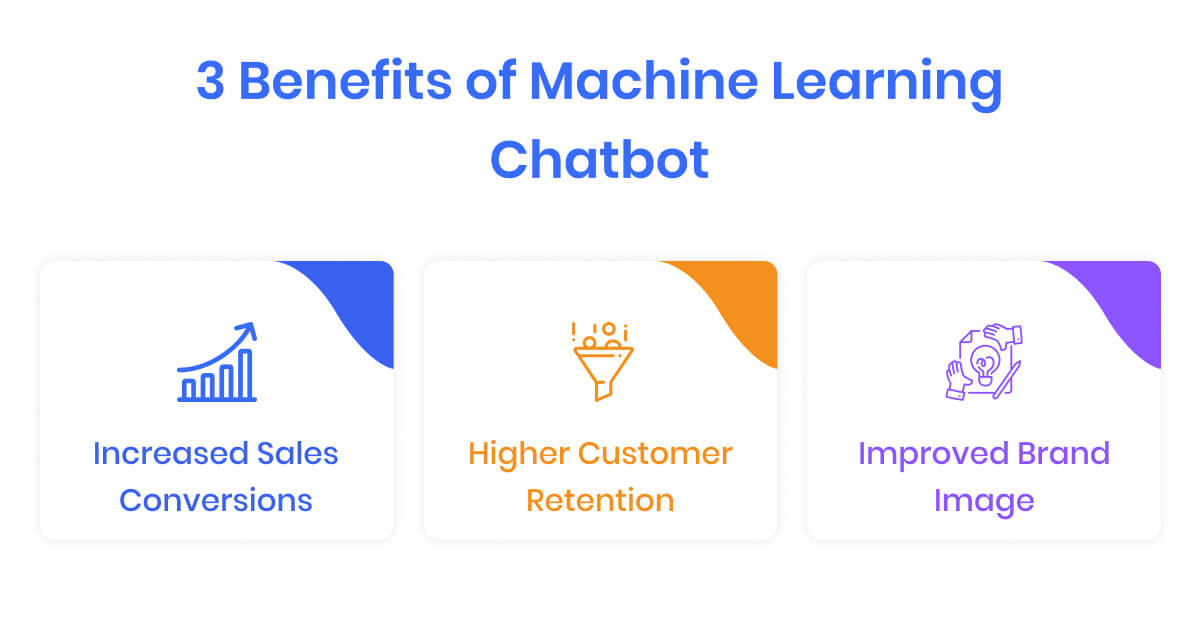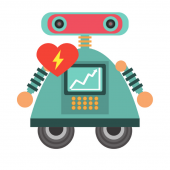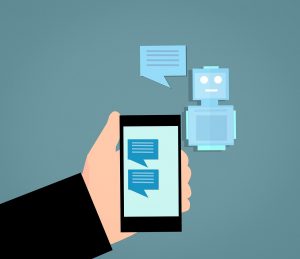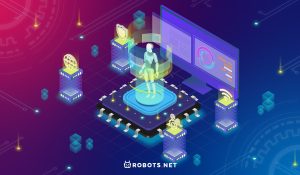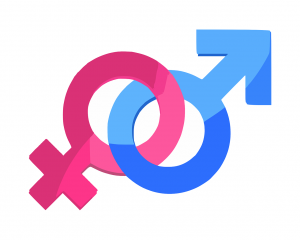Introduction
Today, chatbots have become an integral part of our digital experience. They are everywhere, from customer support on websites to virtual personal assistants on our smartphones. But have you ever wondered how chatbots are able to understand and respond to our queries with such accuracy?
The answer lies in machine learning. Machine learning is a branch of artificial intelligence that enables computers to learn from data and improve their performance over time without being explicitly programmed. Chatbots leverage machine learning algorithms to analyze and understand human language, allowing them to deliver intelligent responses in real-time.
Machine learning has revolutionized the way chatbots operate, making them more versatile and capable of handling complex conversations. In this article, we will explore how chatbots use machine learning algorithms to enhance their functionality and provide seamless user experiences.
By harnessing the power of natural language processing, training data, and sentiment analysis, chatbots have become adept at understanding and responding to human queries, effectively bridging the gap between man and machine. So, let’s dive in and uncover the fascinating world of chatbots and machine learning.
What is machine learning?
Machine learning is a subset of artificial intelligence that focuses on enabling computers to learn and improve their performance based on data and experience, without being explicitly programmed. It is a process of training algorithms to recognize patterns and make predictions or decisions, simulating human learning.
In traditional programming, developers write explicit rules to instruct computers on how to perform specific tasks. However, in machine learning, computers learn to perform tasks by analyzing and interpreting vast amounts of data. This allows them to recognize patterns, make informed decisions, and improve their accuracy over time.
There are several types of machine learning algorithms, including supervised learning, unsupervised learning, and reinforcement learning. In supervised learning, the algorithm is trained on a labeled dataset, where the desired output is provided along with the input. The algorithm learns to map the input to the correct output by minimizing the error between the predicted and actual outputs.
Unsupervised learning, on the other hand, involves training the algorithm on an unlabeled dataset, where the algorithm must discover patterns or relationships without any prior knowledge of the output. This type of learning is often used for clustering, anomaly detection, and dimensionality reduction.
Reinforcement learning is a type of machine learning where an agent learns to take actions in an environment to maximize rewards or minimize penalties. The agent receives feedback in the form of rewards or punishments based on its actions and adjusts its behavior accordingly.
Machine learning algorithms can be applied to various domains, including image recognition, natural language processing, speech recognition, recommendation systems, and more. With the advancement of computing power and the availability of large datasets, machine learning has become increasingly powerful and accurate in solving complex problems.
In the next sections, we will explore how machine learning is used in chatbots to enable them to understand and respond to human queries effectively.
What is a chatbot?
A chatbot, also known as a conversational agent, is a computer program designed to simulate conversation with human users. It uses natural language processing (NLP) techniques to understand and respond to user queries in a human-like manner.
Chatbots can be found in various applications, including websites, messaging platforms, and mobile apps, and they serve a wide range of purposes. Some chatbots are designed for customer service, helping users navigate through frequently asked questions or resolving common issues. Others act as virtual assistants, providing information, scheduling appointments, or performing tasks upon request.
Chatbots can be classified into two main types: rule-based chatbots and machine learning-based chatbots.
Rule-based chatbots operate on a set of predefined rules and patterns. They are programmed to respond to specific keywords or phrases and follow a predetermined conversation flow. While rule-based chatbots can provide quick answers to specific questions, they lack the ability to understand and generate complex responses.
Machine learning-based chatbots, on the other hand, are more advanced and can learn from data and user interactions. These chatbots use natural language processing algorithms to analyze and understand the context, intent, and sentiment behind user queries. By leveraging machine learning techniques, they can provide more accurate and personalized responses.
Chatbots typically consist of two components: the language processing component and the response generation component. The language processing component includes tasks such as input analysis, entity recognition, and intent classification. The response generation component generates appropriate responses based on the analysis of user input.
Nowadays, chatbots are becoming increasingly sophisticated, thanks to advancements in machine learning and artificial intelligence. They can understand natural language, engage in interactive conversations, and adapt to user preferences and behavior over time. This evolution has made chatbots an invaluable tool for businesses looking to provide instant and efficient customer service or streamline various processes through automation.
In the next section, we will explore how machine learning is used in chatbots to enhance their capabilities and provide more intelligent responses.
How does a chatbot use machine learning?
Machine learning plays a crucial role in equipping chatbots with the ability to understand and respond to human queries effectively. By leveraging machine learning algorithms, chatbots can analyze and interpret natural language input, recognize patterns, and generate intelligent responses. Here are some key ways in which chatbots utilize machine learning:
Natural Language Processing (NLP): Chatbots use natural language processing techniques to understand and interpret human language. NLP allows chatbots to analyze the structure and meaning of sentences, identify keywords, extract entities, and classify user intent. This enables chatbots to comprehend user queries and generate relevant responses.
Training Data: Machine learning-based chatbots require training data to learn from. This data is typically labeled with the desired input and output pairs. Chatbot developers feed the training data to the machine learning algorithms to teach them how to understand and respond to different types of user queries. The more diverse and comprehensive the training data, the better the chatbot’s performance.
Intent Recognition: Machine learning algorithms help chatbots accurately recognize user intents. By training the algorithms on labeled data, chatbots can learn to classify user queries into specific categories or intents. For example, a chatbot in a retail application might be trained to recognize intents like “product information,” “pricing,” or “order status.” This allows the chatbot to provide appropriate responses based on the user’s intent.
Contextual Understanding: Machine learning empowers chatbots to understand and maintain context during a conversation. Chatbots can learn to analyze the previous user queries, responses, and interactions to grasp the conversation history and provide more contextually relevant answers. This contextual understanding enhances the user experience and helps chatbots deliver more personalized and accurate responses.
Response Generation: With machine learning, chatbots can generate more intelligent and natural-sounding responses. By training the algorithms on vast amounts of conversational data, chatbots can learn to generate human-like responses based on the input query and the context. This makes the conversation with the chatbot feel more engaging and seamless.
Continuous Learning: Machine learning enables chatbots to improve their performance over time through continuous learning. Chatbots can analyze user interactions, feedback, and other relevant data to identify patterns, spot areas for improvement, and optimize their response generation. This iterative learning process helps chatbots become more accurate and efficient in understanding and addressing user queries.
By leveraging machine learning, chatbots have transformed the way we interact with technology. They have become more responsive, intelligent, and capable of understanding our natural language inputs. Machine learning algorithms serve as the backbone of chatbot technology, empowering them to learn from data, adapt to user preferences, and deliver exceptional user experiences.
In the following sections, we will explore specific aspects of machine learning in chatbots, such as natural language processing, sentiment analysis, and how chatbot performance can be improved through machine learning techniques.
Natural language processing in chatbots
Natural language processing (NLP) is a fundamental component of chatbot technology, enabling chatbots to understand and interpret human language inputs. NLP allows chatbots to analyze the structure, meaning, and context of sentences, extract key information, and generate appropriate responses. Here are some key aspects of natural language processing in chatbots:
Tokenization: Tokenization is the process of breaking down a sentence or a string of text into smaller units called tokens. These tokens can be words, phrases, or even characters. Chatbots use tokenization to divide user queries into meaningful units that can be further analyzed and processed.
Part-of-speech tagging: Part-of-speech tagging is the process of assigning grammatical tags to each word in a sentence. This allows chatbots to understand the role and function of each word within the sentence. By analyzing part-of-speech tags, chatbots can determine the subject, verb, object, and other grammatical elements in the user query, aiding in accurate interpretation.
Entity recognition: Entity recognition involves identifying and categorizing specific pieces of information within a sentence, such as names, dates, locations, or product names. Chatbots utilize entity recognition techniques to extract relevant entities from user queries. For example, in a chatbot for a travel agency, entity recognition could identify destination names or travel dates mentioned by the user.
Sentiment analysis: Sentiment analysis is the process of determining the emotional tone or sentiment behind a piece of text. Chatbots employ sentiment analysis techniques to understand the sentiment expressed in user queries. This allows the chatbot to generate appropriate responses based on the user’s emotional state, providing a more empathetic and personalized conversation.
Intent classification: Intent classification is a crucial aspect of NLP in chatbots. By analyzing user queries, chatbots can determine the underlying intent or purpose of the query. For example, a chatbot in a food delivery application might classify a user query as “placing an order,” “checking order status,” or “requesting a refund.” Intent classification enables chatbots to provide relevant and accurate responses based on the user’s intention.
Syntax and semantic analysis: Syntax and semantic analysis focus on understanding the structure and meaning of sentences. These processes help chatbots analyze the relationships between words, interpret the context, and generate appropriate responses. By employing syntactic and semantic analysis techniques, chatbots can understand complex sentence structures and respond intelligently.
Machine translation: Machine translation is another application of natural language processing in chatbots. It enables chatbots to translate user queries from one language to another, facilitating multilingual communication. This capability is particularly valuable in global or multicultural environments.
Natural language processing techniques are continuously evolving, allowing chatbots to understand and respond to human language with increasing accuracy and sophistication. As chatbots analyze user input using NLP algorithms, they can provide more accurate and contextually relevant responses, delivering a more natural and intuitive conversational experience.
In the next section, we will explore how machine learning is utilized in training a chatbot and improving its performance.
Training a chatbot with machine learning
Training a chatbot with machine learning is a critical step in enabling it to understand and respond accurately to user queries. By leveraging machine learning algorithms, chatbot developers can feed large amounts of labeled training data to train the chatbot and improve its performance over time. Here’s a closer look at how chatbots are trained using machine learning:
Building the training dataset: The first step in training a chatbot is to create or gather a large dataset of labeled examples. This dataset consists of pairs of user queries and the corresponding correct responses or intents. The dataset needs to be diverse and representative of the potential queries the chatbot may encounter.
Feature engineering: Once the training dataset is available, feature engineering takes place. Feature engineering involves extracting relevant features from the training data that the machine learning algorithm can use to learn patterns and make predictions. Features could include words, part-of-speech tags, entity information, sentiment analysis scores, or any other relevant information that aids in understanding the user query.
Selecting the machine learning algorithm: The next step is to choose an appropriate machine learning algorithm. Different algorithms, such as support vector machines, decision trees, or neural networks, can be used depending on the complexity of the problem and the available resources. The selected algorithm will be trained on the labeled dataset to learn the patterns and relationships between the features and the correct responses.
Training the algorithm: The machine learning algorithm is trained using the labeled dataset. During training, the algorithm analyzes the features extracted from the user queries and attempts to minimize the error between its predicted responses and the correct responses in the dataset. Through an iterative process, the algorithm adjusts its internal parameters to optimize its performance.
Evaluating and refining: After training, the chatbot’s performance needs to be evaluated. This is done by using a separate evaluation dataset that was not used during training. The performance metrics, such as accuracy or precision, are calculated to assess the chatbot’s effectiveness. If necessary, the training process can be repeated with refined datasets or adjusted parameters to further improve the chatbot’s performance.
Ongoing learning: An important aspect of training a chatbot is the ability to continuously learn and adapt to new data. As the chatbot interacts with users and receives new input, it can update its knowledge and refine its responses. This ongoing learning helps the chatbot stay up-to-date with changing user needs and preferences.
Training a chatbot with machine learning is an iterative process that requires careful data preparation, algorithm selection, and training evaluation. By using machine learning techniques, chatbots can improve their understanding of user queries, generate more accurate and relevant responses, and provide a better user experience.
In the next section, we will explore how sentiment analysis can be combined with machine learning to enhance the performance of chatbots.
Sentiment analysis and chatbots
Sentiment analysis is a powerful tool that can be integrated into chatbots to enhance their understanding of user queries and generate more personalized responses. By analyzing the sentiment expressed in user inputs, chatbots can better comprehend the user’s emotional state and tailor their responses accordingly. Here’s how sentiment analysis is utilized in chatbots:
Understanding user emotions: Sentiment analysis enables chatbots to determine the emotional tone or sentiment behind user queries. By analyzing the text, the chatbot can identify whether the user’s sentiment is positive, negative, or neutral. This understanding helps the chatbot respond in a more empathetic and appropriate manner.
Personalized responses: By incorporating sentiment analysis, chatbots can generate personalized responses based on the user’s sentiment. For example, if a user expresses frustration or dissatisfaction, the chatbot can provide additional support or escalate the issue to a human agent. Similarly, if a user expresses happiness or satisfaction, the chatbot can share positive reinforcement or suggest related content.
Improved context comprehension: Sentiment analysis can assist chatbots in understanding the context of a conversation by analyzing the sentiment expressed in previous user queries. By considering the overall sentiment trend in the conversation, chatbots can tailor their responses more effectively and maintain a consistent emotional context.
Enhanced customer support: Sentiment analysis can be particularly valuable in customer support scenarios. When users express frustration or anger, chatbots can recognize their negative sentiment and prioritize their feedback for prompt resolution. This ensures that customers feel heard and understood, even when interacting with a machine.
Sentiment-based recommendations: By analyzing the sentiment of user queries and responses, chatbots can offer sentiment-based recommendations. For instance, a chatbot in an e-commerce application can suggest products with positive reviews or tailor recommendations based on the user’s sentiment towards certain product categories.
Continuous learning: Sentiment analysis can also aid in the continuous learning of chatbots. By analyzing user sentiment and feedback, chatbots can adapt their responses and improve their performance over time. This iterative learning process allows chatbots to become more attuned to user emotions and preferences.
Integrating sentiment analysis into chatbots adds a layer of emotional intelligence, making them more attentive and responsive to users’ needs. By accurately understanding and leveraging user sentiment, chatbots can provide a more customized and empathetic conversational experience.
In the following section, we will explore how machine learning techniques can further improve the performance of chatbots and enhance their capabilities.
Improving chatbot performance with machine learning
Machine learning techniques play a crucial role in enhancing the performance of chatbots. By leveraging various machine learning algorithms and approaches, chatbots can continually improve their understanding of user queries, generate more accurate responses, and offer a more seamless and natural conversational experience. Here are some ways in which machine learning can improve chatbot performance:
Improving accuracy: Machine learning allows chatbots to continually learn from user interactions and improve their accuracy over time. By analyzing patterns in user queries and responses, chatbots can adjust their algorithms and models to optimize their performance. Through ongoing learning and refinement, chatbots can provide more precise and relevant answers to user queries.
Handling complex queries: Machine learning-based chatbots excel at handling complex queries or requests. With the ability to understand context, extract intents, and recognize entities, machine learning algorithms enable chatbots to handle nuanced and multifaceted user queries. This flexibility and adaptability allow chatbots to provide more comprehensive and satisfactory responses.
Personalization: Machine learning algorithms enable chatbots to personalize responses based on user preferences and behavior. By analyzing user interactions, past queries, and historical data, chatbots can offer tailored recommendations, suggestions, or responses that align with the individual user’s preferences. This personalization enhances the user experience and builds stronger engagement.
Contextual understanding: Machine learning allows chatbots to better understand and maintain the context of a conversation. By analyzing previous queries and responses, chatbots can grasp the conversation history and generate more contextually relevant answers. This contextual understanding enhances the flow of the conversation and provides users with a more seamless and human-like experience.
Enhancing natural language processing: Machine learning can significantly enhance the natural language processing capabilities of chatbots. By training machine learning models on large amounts of labeled data, chatbots can improve their language understanding, syntax analysis, and semantic comprehension. This results in more accurate and meaningful responses, enhancing the overall quality of the conversation.
Adapting to user feedback: Machine learning enables chatbots to adapt and improve based on user feedback. By analyzing user ratings, sentiment analysis, or explicit feedback, chatbots can adjust their responses and behavior to address any shortcomings or areas of improvement. This iterative learning process ensures that chatbots continuously evolve and provide better user experiences.
By utilizing machine learning techniques, chatbots can continually enhance their performance, understand user intent more accurately, and generate responses that are relevant, accurate, and personalized. The ability of chatbots to learn, adapt, and improve over time is a key advantage of machine learning, enabling them to deliver increasingly sophisticated and user-centric interactions.
In the next section, we will bring together the various elements discussed to summarize the ways in which machine learning empowers chatbots with advanced capabilities.
Conclusion
Machine learning has revolutionized the capabilities of chatbots, enabling them to understand and respond to human queries with remarkable accuracy and intelligence. Through natural language processing, training data, sentiment analysis, and continuous learning, chatbots have become valuable tools in various applications, providing seamless user experiences and efficient automation.
With machine learning, chatbots are able to analyze the structure and meaning of sentences, extract relevant information, and generate contextually appropriate responses. They can learn from vast amounts of data and adapt their algorithms to improve their understanding of user intent. Machine learning also empowers chatbots to personalize their responses, maintain context during conversations, and continuously learn from user feedback to enhance their performance.
By incorporating sentiment analysis, chatbots can comprehend the emotional tone behind user queries and tailor their responses accordingly. This adds a layer of emotional intelligence, allowing chatbots to provide empathetic and personalized interactions.
Machine learning algorithms help chatbots handle complex queries, improve the accuracy of their responses, and adapt to user preferences. They enhance the natural language processing capabilities of chatbots, enabling more accurate understanding of user inputs and generating more meaningful and personalized responses.
The continuous improvement and evolution of chatbots through machine learning make them an invaluable asset in customer support, virtual assistants, and various other applications. They have the potential to streamline processes, increase efficiency, and provide exceptional user experiences.
As technology continues to advance, machine learning algorithms will continue to push the boundaries of chatbot capabilities. With ongoing research and development, the future holds even more exciting possibilities for chatbots, enabling them to become even more intelligent, intuitive, and human-like in their interactions.
In summary, machine learning is the driving force behind the success of chatbots. It empowers them to understand and respond to human queries effectively, adapt to user preferences, and provide personalized and accurate responses. With the aid of machine learning, chatbots have become valuable tools in today’s digital landscape, enhancing communication, improving customer experiences, and simplifying various tasks.







